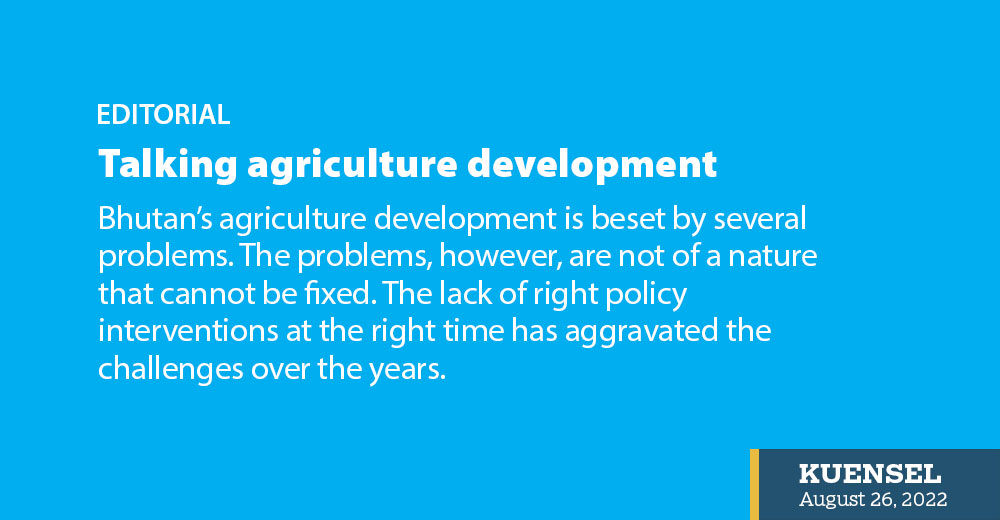Bhutan’s agriculture development is beset by several problems. The problems, however, are not of a nature that cannot be fixed. The lack of right policy interventions at the right time has aggravated the challenges over the years.
As an agrarian country with a large percentage of the population in the sector, it is about time we really gave a leg up to the sector.
Of the total arable land in the country of just 7 percent—664,000 acres—only 2.93 percent is under cultivation. On the other hand, the fallowing of land is increasing. On the last count, in 2019, total fallow land constituted 66,120.32 acres.
While every five-year plan since the early 1960s has emphasised the development of the agriculture sector, the reality has been quite the contrary. Our food import figures have been almost doubling year after year.
To bring real change in the sector, understanding the core issues the sector is grappling with is important. More important, prompt and earnest actions must follow. This has not been happening.
There are three main challenges Bhutanese farmers have to deal with. These are not new problems. Surveys and studies have always pointed to these challenges but there have not been right or enough interventions.
Labour shortage on farms is among the biggest challenge facing farmers today. And then there is the issue of human-wildlife conflict, which is increasing partly due to our strict conservation laws. When the livelihoods of the farmers do not count so much as the importance of conservation of nature and wildlife, farming becomes difficult. And so, the increasing migration of people from villages and farms to towns in search of a better alternative.
Attempts are being made to address these issues, including compensation to the farmers for crop loss to wild animals. Even conservation laws are being studied and changes proposed. Sadly, however, electric fencing, trenching and insurance systems alone will never be enough. Lack of water for irrigation or dysfunctional irrigation system has been one of the biggest problems in many parts of the country. Labour shortage will continue to be a problem if we cannot attract young and educated Bhutanese to farms.
The focus of the agriculture ministry now has to be to encourage the farmers in different dzongkhags to grow crops that do well in their places. This development is already being implemented in some dzongkhags but it must pick pace. Prioritising crop production according to seasons is important so that farmers can find ready markets. This, in the long run, will make the country self-sufficient in food.
There is a need for the many government policies to meet somewhere. Agriculture development must take a new turn because it has the potential to address a lot of difficulties facing the country.


